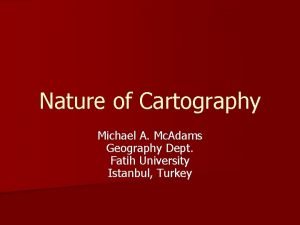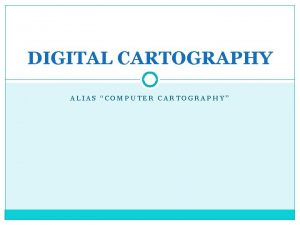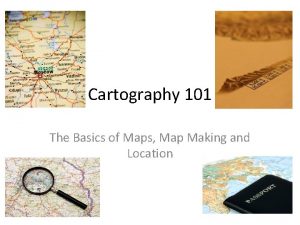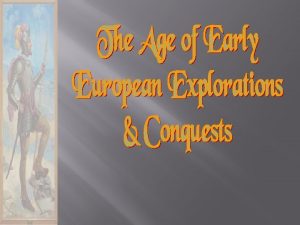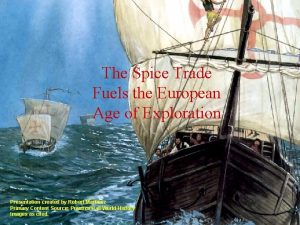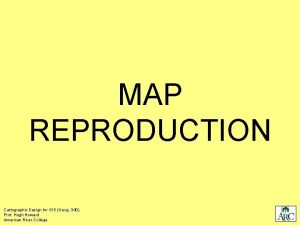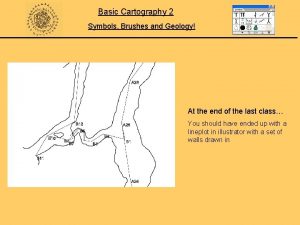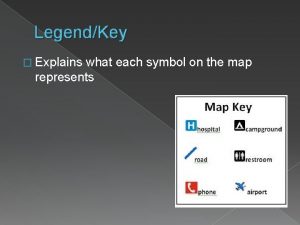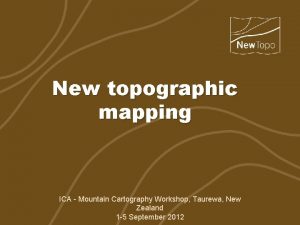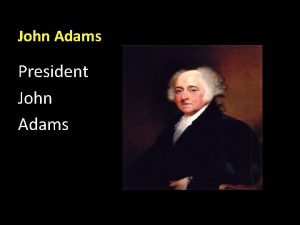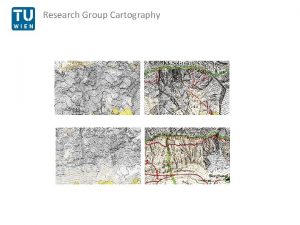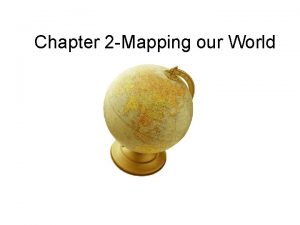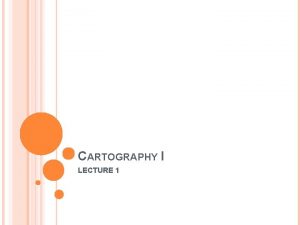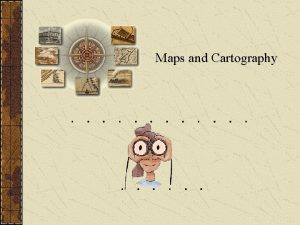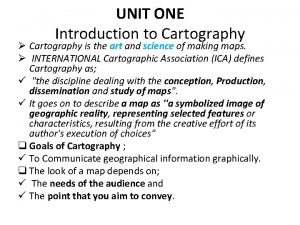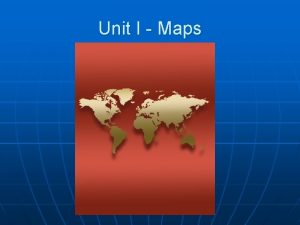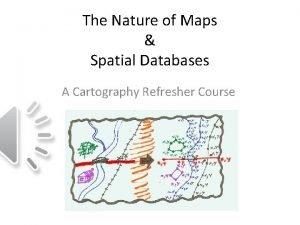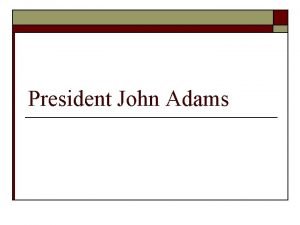Nature of Cartography Michael A Mc Adams Geography
















- Slides: 16

Nature of Cartography Michael A. Mc. Adams Geography Dept. Fatih University Istanbul, Turkey

What are we trying to do when we study Cartography? n Discover spatial reality? n Meaning of spatial relationships? n Where things are absolutely located, measured and how find directions? n Make pretty maps? n I really do not know?

Maps Represent the World Contested meanings ~ maps are texts to be “decoded” Not only is it easy to lie with maps, it’s essential. To portray meaningful relationships for a complex, three-dimensional world on a flat sheet of paper or a video screen, a map must distort reality. Mark Monmonier How to Lie with Maps (1996) All maps, in one sense are lies since they involve a massive partial (mis)representation of the solid world on a smaller object…. Maps do show us the lie of the land, in the multiple sense of the word “lie. ” John Rennie Short The World through Maps: A History of Cartography (2003) http: //www. accd. edu/sac/lrc/librns/celita/keller. ppt

Decoding Maps Key terms n Projection – the formal representation of the round world on a flat surface n n Scale – maps compress, “scale” is the measure of compression Orientation – the “directionality” of a map Symbols – make visible the features, places, and other locational information represented on the map. http: //www. accd. edu/sac/lrc/librns/celita/keller. ppt

Projection http: //www. accd. edu/sac/lrc/librns/celita/keller. ppt

Maps as Spatial Imagery Map - the graphic representation of the geographical setting. n Cartography is the making and study of maps in all their aspects. n Cartography is an efficient way of manipulating, analysing and expressing ideas, forms and relationships that occur in two- and three-dimensional space. n http: //geog. hkbu. edu. hk/geog 1150/Lect 01_files/frame. htm n

Characteristics of Maps Locations in two-dimensional space n Attributes - qualities or magnitudes n – Examples: – Relationships among locations, e. g. Distance – Relationships among various attributes at one location, e. g. Temperature, rainfall and soil – Relationships among the locations of the attributes of a given distribution, e. g. Rainfall – Relationships among the locations of derived or combined attributes of given distributions, e. g. Relation of GDP and population http: //geog. hkbu. edu. hk/geog 1150/Lect-01_files/frame. htm

More Characteristics of Maps – All geographical maps are reductions. n Scale. – All maps involve geometrical transformations. Map projection. n All maps are abstractions of reality. n – All maps use signs to stand for elements of reality. – Symbolism. http: //geog. hkbu. edu. hk/geog 1150/Lect 01_files/frame. htm

Catagories of Maps Classed by scale Small-scale map Large-scale map n Classed by function General reference maps Thematic maps Charts n Classed by subject matter n

Processes in Cartography n Collecting and selecting the data for mapping n Manipulating and generalising the data, designing and constructing the map n Reading or view the map n Responding to or interpreting the information

Map Effectiveness Simplification Selection Symbolisation Map Making Classification Map Effectiveness Exaggeration Analysis Map Use Reading http: //geog. hkbu. edu. hk/geog 1150/Lect-01_files/frame. htm Interpretation

Geographic Information Transformation Census Ground survey Remote sensing Compilation Geographical Environment Selection Classification Simplification Exaggeration Symbolisation Recognised Geographical Information Transform 1 Transform 2 Reading Analysis Interpretation Map MAP Image Transform 3 http: //geog. hkbu. edu. hk/geog 1150/Lect-01_files/frame. htm

The Scope of Cartography Map Maker Data Map User

Emphasis on Cartographic Representation n The principal task of cartography is to communicate environmental information. n The emphasis on cartographic representation is map effectiveness in thought and communication. n This is best achieved by treating the making and using of maps equally.

Spatial and Non-Spatial Disciplines Intergration Cartography

Conclusion n Cartography is a complex discipline that has a rich and varied history n It is intergrated part of geography n The root and the guidance for all spatial technologies n Is and art involving design and also a science due to representation of the earth (or another planet) visual and non-visual attributes
 Nature of cartography
Nature of cartography Adams and adams secretarial training
Adams and adams secretarial training Digital cartography definition
Digital cartography definition Cartography 101
Cartography 101 World map 1492
World map 1492 Cartography
Cartography Map reproduction methods
Map reproduction methods Cartography brushes
Cartography brushes Lengend/key
Lengend/key Applied cartography
Applied cartography Mountain cartography
Mountain cartography Lgbt
Lgbt Nature and nature's laws lay hid in night meaning
Nature and nature's laws lay hid in night meaning Determinace lidské psychiky
Determinace lidské psychiky Frq examples ap human geography
Frq examples ap human geography 5 themes of geography ap human geography
5 themes of geography ap human geography Proruption ap human geography
Proruption ap human geography
